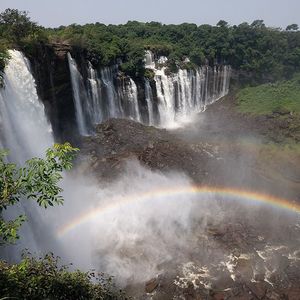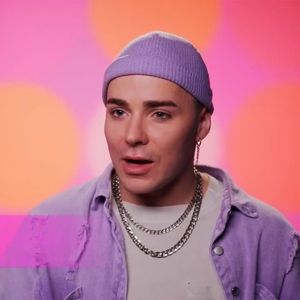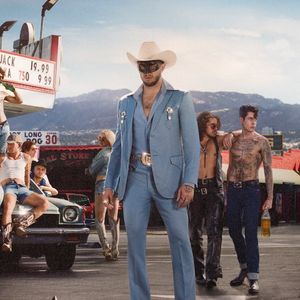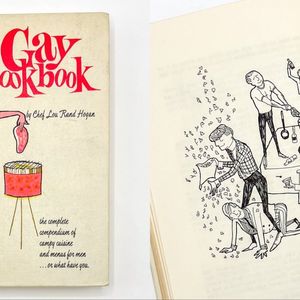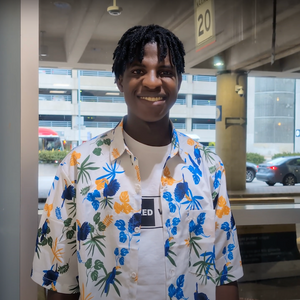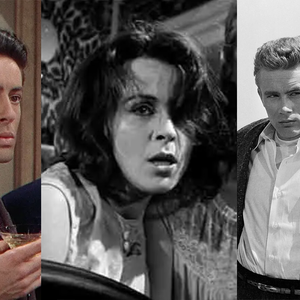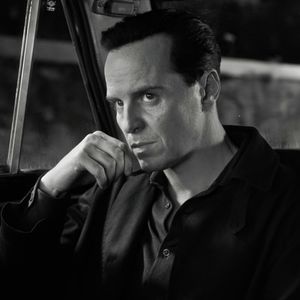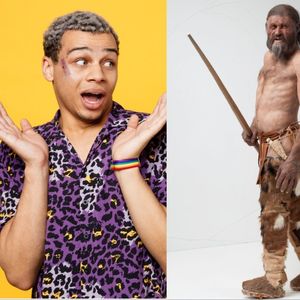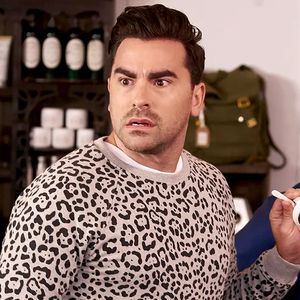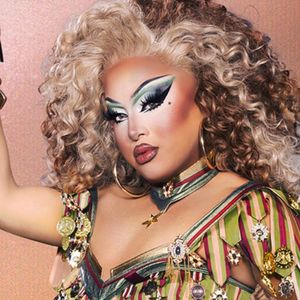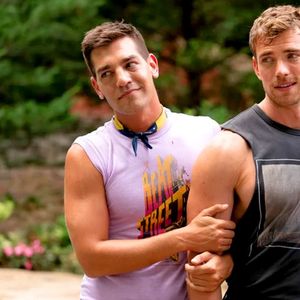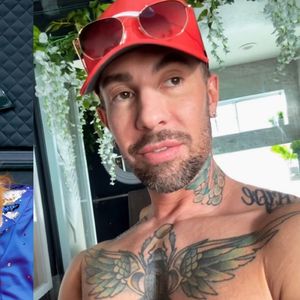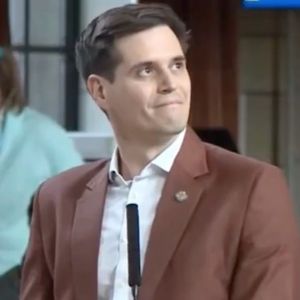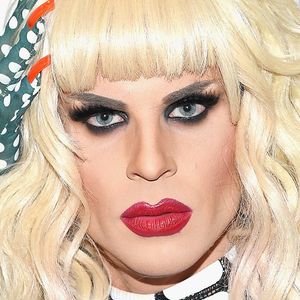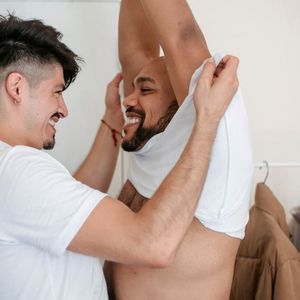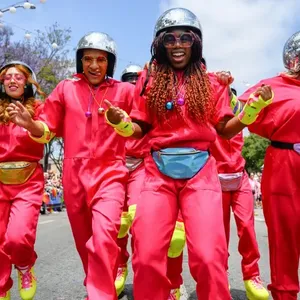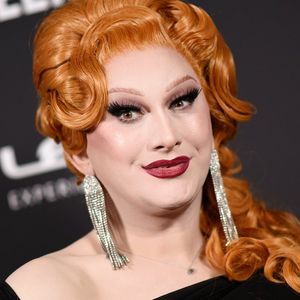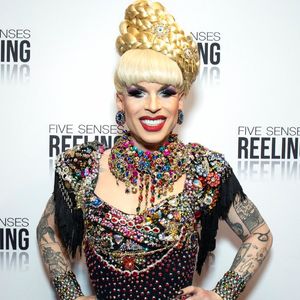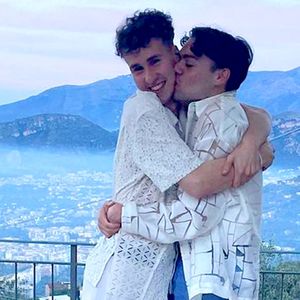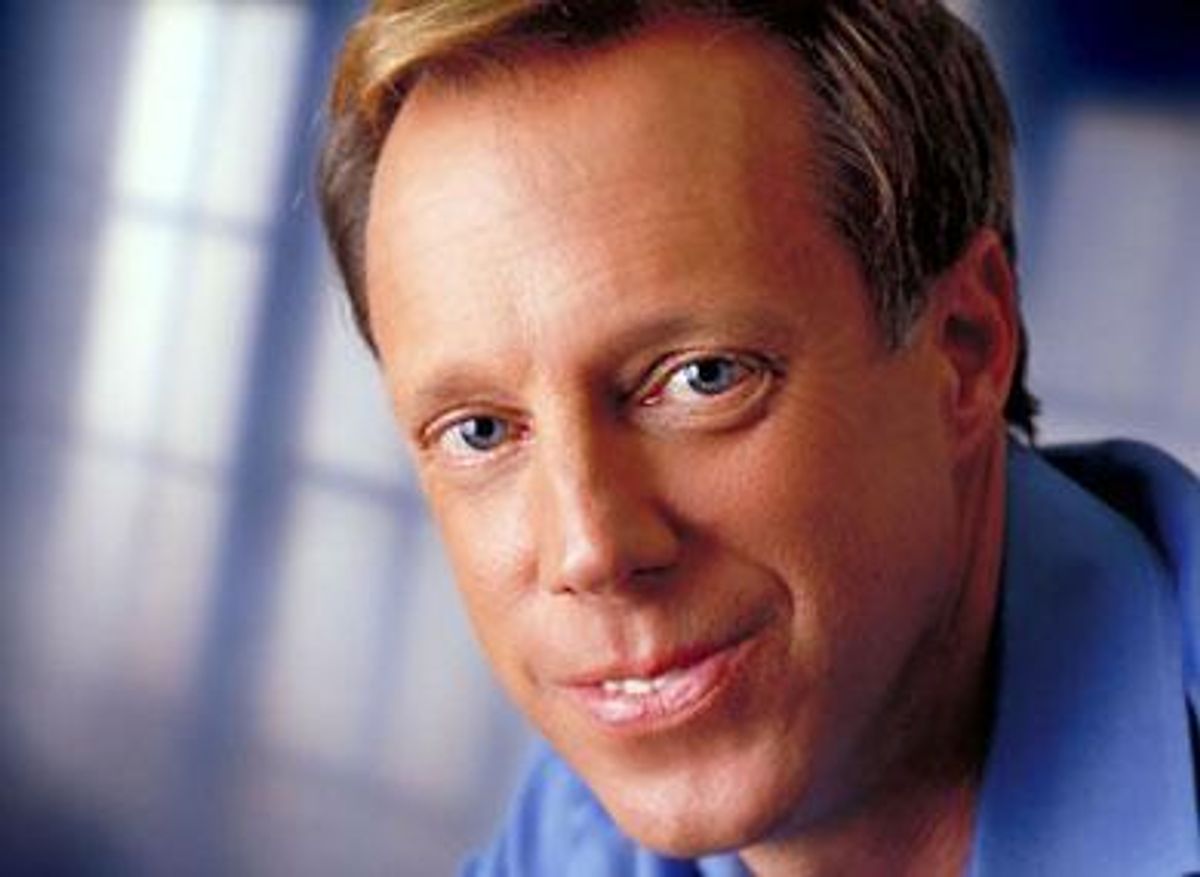
CONTACTStaffCAREER OPPORTUNITIESADVERTISE WITH USPRIVACY POLICYPRIVACY PREFERENCESTERMS OF USELEGAL NOTICE
© 2024 Pride Publishing Inc.
All Rights reserved
All Rights reserved
By continuing to use our site, you agree to our Private Policy and Terms of Use.
Were it possible to represent those times exactly to those that did not see them, and give the reader due ideas of the horror that everywhere presented itself, it must make just impressions upon their minds and fill them with surprise.
-- Daniel Defoe, Journal of the Plague Year
When my first book about the AIDS epidemic, Dancing Against the Darkness: A Journey through America in the Age of AIDS, was published in 1990, few people -- certainly not me -- could have imagined that we'd still be wrestling with this monstrous plague decades later. Who would have thought that the "Age of AIDS" would define not one generation, but several; not one continent, but all; and that despite the good intentions of many (and partly because of the treacherous acts of others), this epidemic would color -- no, would stain -- our world to the extent it has?
This epidemic, actually a pandemic, consists of millions of individual stories: 60 million infected worldwide, 30 million dead. Five years ago, HIV-positive activist Mary Fisher wrote to me, "We have learned something in 25 years -- not enough, but something. We've learned that the media cannot continue a story when people have heard enough of it. So, for example, 15,000,000 children orphaned by AIDS isn't seen as 15,000,000 stories; it is one story told 15,000,000 times." Alas, her words are just as true today as when she wrote them.
Anniversaries, especially sad ones like this, are for remembering. In this 30th year of the HIV epidemic, we need to remember our brothers and sisters, mothers and fathers, friends, lovers, and coworkers. This conscious act of remembrance is especially important as the epidemic continues to fade from the front page and from the day-to-day awareness of all too many young people taking unnecessary risks with their lives -- and the lives of their sexual partners.My own story of involvement with the AIDS epidemic is a volatile mix of the personal and the political. In the summer of 1986, out of the blue, my doctor sat me down and told me quietly that my biopsy results were "consistent with Kaposi's sarcoma," one of the cancers associated with AIDS. In case his message hadn't been clear enough, he continued -- without looking me in the eye -- by asking, "Do you know what that means?" I nodded yes, but still he felt compelled to answer his own question: "It's AIDS. Why don't you go home and get used to the idea?"
At 29, I was forced to acknowledge that my life expectancy had been abruptly truncated to 18 months (at best). No viable treatments existed back then; we were still many dark years before the antiviral "cocktail" would prove effective at reducing the excruciatingly high rate of mortality. In those first weeks anxiety often overwhelmed me, each time taking a different form. I'd be shaving and see familiar pimples turn into Kaposi's lesions in the mirror. I'd be jogging and have such tightness in my lungs that I was sure I had developed pneumocystis, the AIDS-related pneumonia. In the grocery store I bought the smallest jars of mayonnaise and mustard because I expected to die before finishing off two ounces of some lousy condiment.
But amid the anger, the sense of powerlessness, and a knee-rattling fear, I made a promise, scrawled in my journal: "to help other people understand what it means to live with this disease and to die with it." Like so many others in our community, I had previously become a volunteer -- joining the ranks of those at the San Francisco AIDS Foundation, working the hotline religiously on Thursday evenings.
But I was one of the lucky ones: it turned out that I had been misdiagnosed, a result of bad medicine (the biopsy had been read incorrectly) and physician bias ("He's gay; it must be AIDS"). But really I was just plain lucky. I had had unsafe sex, even after we -- I -- knew better.
Still, I set out to do more -- fueled by the deaths I was witnessing, the indifference of the Reagan administration, and the false promises of the medical establishment. The result, Dancing Against the Darkness, was one of the first books to profile people with AIDS, telling their stories and those of their friends and loved ones. The title itself was inspired by the words of a young woman with AIDS from Washington, D.C., whom I interviewed for the book. An African-American woman in her 20s, Denise Caldwell worked diligently to provide counseling services to women like herself, injection drug users, at risk for HIV. She also explained to me what it was like to live with this disease: "It's the dance against the edge of darkness," she said -- not long before she died.
-- Daniel Defoe, Journal of the Plague Year
When my first book about the AIDS epidemic, Dancing Against the Darkness: A Journey through America in the Age of AIDS, was published in 1990, few people -- certainly not me -- could have imagined that we'd still be wrestling with this monstrous plague decades later. Who would have thought that the "Age of AIDS" would define not one generation, but several; not one continent, but all; and that despite the good intentions of many (and partly because of the treacherous acts of others), this epidemic would color -- no, would stain -- our world to the extent it has?
This epidemic, actually a pandemic, consists of millions of individual stories: 60 million infected worldwide, 30 million dead. Five years ago, HIV-positive activist Mary Fisher wrote to me, "We have learned something in 25 years -- not enough, but something. We've learned that the media cannot continue a story when people have heard enough of it. So, for example, 15,000,000 children orphaned by AIDS isn't seen as 15,000,000 stories; it is one story told 15,000,000 times." Alas, her words are just as true today as when she wrote them.
Anniversaries, especially sad ones like this, are for remembering. In this 30th year of the HIV epidemic, we need to remember our brothers and sisters, mothers and fathers, friends, lovers, and coworkers. This conscious act of remembrance is especially important as the epidemic continues to fade from the front page and from the day-to-day awareness of all too many young people taking unnecessary risks with their lives -- and the lives of their sexual partners.My own story of involvement with the AIDS epidemic is a volatile mix of the personal and the political. In the summer of 1986, out of the blue, my doctor sat me down and told me quietly that my biopsy results were "consistent with Kaposi's sarcoma," one of the cancers associated with AIDS. In case his message hadn't been clear enough, he continued -- without looking me in the eye -- by asking, "Do you know what that means?" I nodded yes, but still he felt compelled to answer his own question: "It's AIDS. Why don't you go home and get used to the idea?"
At 29, I was forced to acknowledge that my life expectancy had been abruptly truncated to 18 months (at best). No viable treatments existed back then; we were still many dark years before the antiviral "cocktail" would prove effective at reducing the excruciatingly high rate of mortality. In those first weeks anxiety often overwhelmed me, each time taking a different form. I'd be shaving and see familiar pimples turn into Kaposi's lesions in the mirror. I'd be jogging and have such tightness in my lungs that I was sure I had developed pneumocystis, the AIDS-related pneumonia. In the grocery store I bought the smallest jars of mayonnaise and mustard because I expected to die before finishing off two ounces of some lousy condiment.
But amid the anger, the sense of powerlessness, and a knee-rattling fear, I made a promise, scrawled in my journal: "to help other people understand what it means to live with this disease and to die with it." Like so many others in our community, I had previously become a volunteer -- joining the ranks of those at the San Francisco AIDS Foundation, working the hotline religiously on Thursday evenings.
But I was one of the lucky ones: it turned out that I had been misdiagnosed, a result of bad medicine (the biopsy had been read incorrectly) and physician bias ("He's gay; it must be AIDS"). But really I was just plain lucky. I had had unsafe sex, even after we -- I -- knew better.
Still, I set out to do more -- fueled by the deaths I was witnessing, the indifference of the Reagan administration, and the false promises of the medical establishment. The result, Dancing Against the Darkness, was one of the first books to profile people with AIDS, telling their stories and those of their friends and loved ones. The title itself was inspired by the words of a young woman with AIDS from Washington, D.C., whom I interviewed for the book. An African-American woman in her 20s, Denise Caldwell worked diligently to provide counseling services to women like herself, injection drug users, at risk for HIV. She also explained to me what it was like to live with this disease: "It's the dance against the edge of darkness," she said -- not long before she died.
In fact, it wasn't long before all but one of the main "characters" of the book had died. That fact shocked me then, especially how quickly this combustible virus snuffed lives out. We just didn't know then that nearly everyone who contracted the disease back in those very first years would succumb to it.
One of them was Bill Cox, a Pulitzer Prize-winning editor, who revealed his diagnosis to his readers (and the world) by writing a column titled "A Journalist With AIDS" for the Honolulu Star-Bulletin. In those 500 words, he told the world that yes, he was gay, and, yes, he had AIDS, sprinting out of two closets with grace and determination. "If we don't wanted to be treated as a pariah, we have to stop acting like one," he wrote.
Then there were the three Ray brothers, Ricky, Robert, and Randy, hemophiliacs from birth, living in Arcadia, Fla. The boys became infected with HIV through their blood-clotting agent, and local school officials barred them from school. After an extended legal battle and much community opposition, the boys won the right to a public school education. Soon after they returned to school, Louise Ray, their mother, answered the phone only to hear "Your children will die." That night the Rays fled their home, and an intruder broke into their house, burning it to the ground. Among the surviving artifacts was a poster that read "I have AIDS. Please hug me. I can't make you sick." Ricky died in 1992 at age 15; Robert in 2000 at 22. Randy manages his HIV with medication.
What did I learn from all those I met along the way? It's hard to distill, but I know I learned the importance of showing compassion to others, no matter how bad your own suffering is; refusing to be defeated, even when defeat is inevitable; and having faith that your life has meaning and value -- an attitude that becomes especially important when your life is fated to be brief.
Denise Caldwell gave eloquent expression to these truths in her last letter to me, dated December 3, 1987:
"I sometimes feel my pain ain't so bad after all, especially when I see [others] worse than myself. I pray for them because this can be such a cruel world. ... I'm learning to cope. Sometimes it's easier than others. I do know that God is making an example out of me. When I talk to people, trying to get help for me, they in turn tell me what an inspiration I've been to them.
"I've got a made up mind and a determined heart not to let the chips keep me down. I say that because I stumble sometimes. ... At present I'm taking the drug AZT. It can be unbearable at times, yet I continue to keep the faith and trust God for a healing one way or the other. He gives me no more than I can stand.
"So until the next time, my friend.
God Bless,
Denise."
---
Who do you remember that has passed on -- or who lives on -- in the course of the epidemic?
Want more breaking equality news & trending entertainment stories?
Check out our NEW 24/7 streaming service: the Advocate Channel!
Download the Advocate Channel App for your mobile phone and your favorite streaming device!
From our Sponsors
Most Popular
Here Are Our 2024 Election Predictions. Will They Come True?
November 07 2023 1:46 PM
17 Celebs Who Are Out & Proud of Their Trans & Nonbinary Kids
November 30 2023 10:41 AM
Here Are the 15 Most LGBTQ-Friendly Cities in the U.S.
November 01 2023 5:09 PM
Which State Is the Queerest? These Are the States With the Most LGBTQ+ People
December 11 2023 10:00 AM
These 27 Senate Hearing Room Gay Sex Jokes Are Truly Exquisite
December 17 2023 3:33 PM
30 Steamy Photos of Folsom Street Fair 2023 Debauchery
October 15 2023 11:06 PM
10 Cheeky and Homoerotic Photos From Bob Mizer's Nude Films
November 18 2023 10:05 PM
42 Flaming Hot Photos From 2024's Australian Firefighters Calendar
November 10 2023 6:08 PM
These Are the 5 States With the Smallest Percentage of LGBTQ+ People
December 13 2023 9:15 AM
Here are the 15 gayest travel destinations in the world: report
March 26 2024 9:23 AM
Watch Now: Advocate Channel
Trending Stories & News
For more news and videos on advocatechannel.com, click here.
Trending Stories & News
For more news and videos on advocatechannel.com, click here.
Latest Stories
John Cena opens up about defending his gay brother when they were kids
April 09 2024 10:21 PM
Trans Latina Meraxes Medina killed in Los Angeles
April 09 2024 10:11 PM
Morgxn is proudly queering Southern music - here's how
April 09 2024 7:03 PM
Elon Musk uses burner accounts on X, doesn’t fact-check: report
April 09 2024 5:44 PM

Pride
Yahoo FeedDiscover endless fun at The Pride Store: Games & electronics for all ages
April 09 2024 4:25 PM
Mean Girls' Daniel Franzese on playing an HIV+ character
April 09 2024 4:19 PM


































